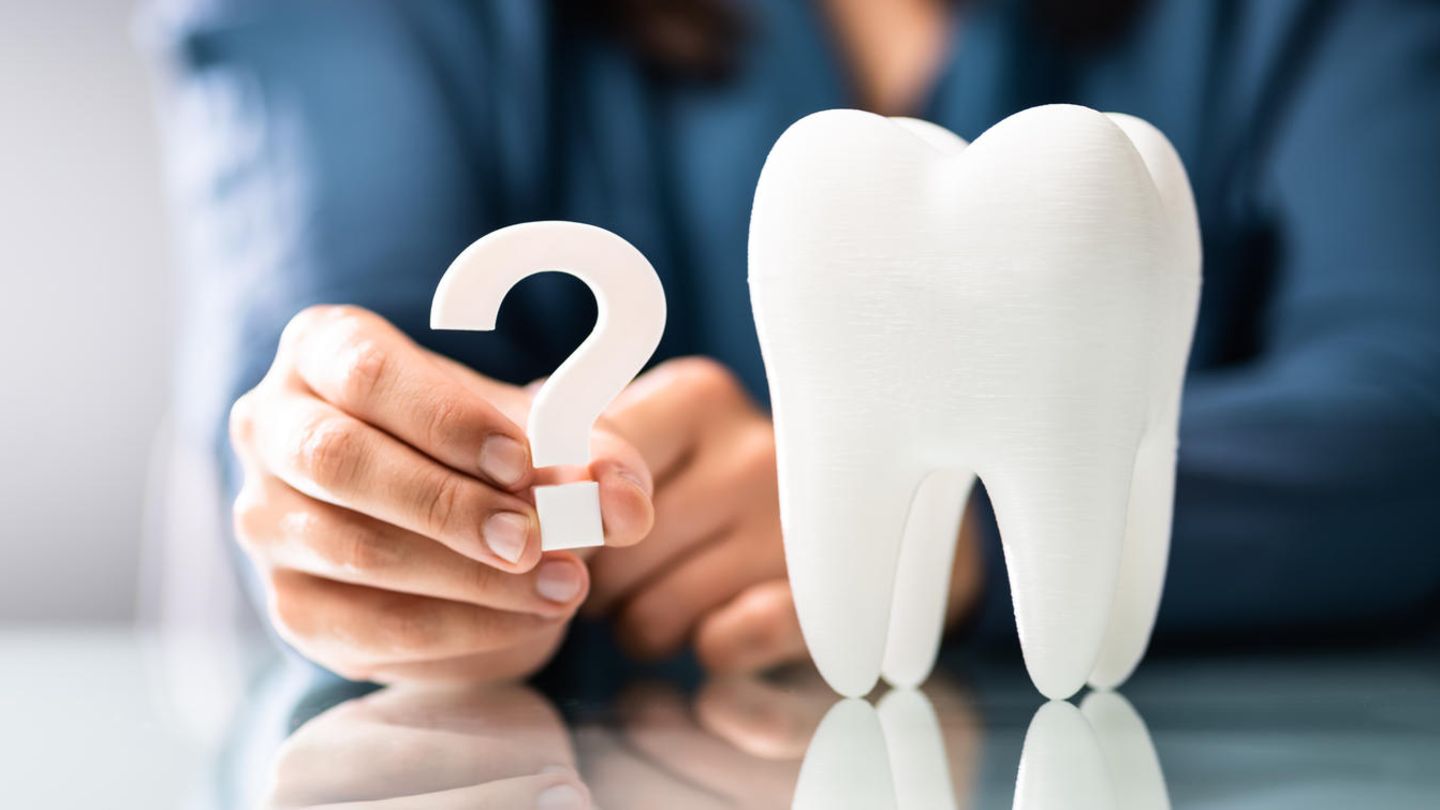Sarah Winters: Together with Mrs. Dr. Freier I have talked about dental myths that she will debunk for us. The qualified dentist has had her own practice for several years, in which she has focused on aesthetic and digital dentistry. Hello Mrs. suitor I am very happy that this interview worked out. Then let’s start with the first myth, namely that you should brush your teeth immediately after eating.
Miss Dr. Suitor: Unfortunately, the myth that you should brush your teeth immediately after eating is false. Because food often contains acids, for example in fruit, in orange juice, i.e. in many things that we eat. These acids roughen tooth enamel, if you brush your teeth directly, you would, so to speak, separate the detached tooth enamel from your teeth. That’s why you try to wait half an hour so that the saliva can be neutralized again and again and you can’t damage it while brushing your teeth.
Sarah Winters: And what about the claim that you really can’t brush your teeth often enough during the day?
Miss Dr. Suitor: Unfortunately, the myth that you can’t brush your teeth often enough in a day isn’t necessarily true and, above all, not necessary. It’s about brushing your teeth properly and thoroughly. And it’s enough if you do it twice a day, i.e. in the morning and in the evening. It is best to brush your teeth thoroughly with an electric toothbrush or a manual toothbrush, covering all areas including the gum line and, very importantly, not forgetting to take care of the interdental spaces. So use dental floss or interdental brushes to clean the areas between the teeth properly.
Sarah Winters:: It is often said that you should brush your teeth from red to white, i.e. away from the gums. But what is actually true of this myth?
Miss Dr. Suitor: Yes, it is actually the case that cleaning from red to white is the right way to go. This means that whenever you use a manual toothbrush, you put it on the edge of the gum, i.e. at the transition between gum and tooth, between red and white. Then you shake it a bit and then spread the whole thing down towards the white part to remove all the bacteria and not to press into the crease between the gum and the tooth, but exactly in the other direction.
Sarah Winters: I’ve heard that chewing gum or eating an apple as a substitute for brushing your teeth. But the statement is true.
Miss Dr. Suitor: Unfortunately, chewing gum was by no means a substitute for brushing your teeth. Chewing gum is a habit that many of us have. It stimulates the production of saliva and saliva is always good for washing away leftover food and for stimulating acid neutralization in the mouth. So chewing gum can have a supportive effect, but it is by no means a substitute for oral hygiene. So that means mechanically with a toothbrush, with an approximal brush, i.e. with interdental brushes or dental floss, you actually have to brush away the plaque manually. We also like to eat apples. It is also healthy, but unfortunately it does not serve to replace brushing your teeth. Basically, brushing your teeth cannot replace anything.
Sarah Winters: Sugar is bad for your teeth. I think we all heard this sentence often enough as children. But to what extent does sugar actually damage our teeth?
Miss Dr. Suitor: As for the myth that sugar is bad for your teeth, I’d say half true. Of course, sugar is the food for the bacteria that produce tooth decay. This means whenever we eat sugar, we are feeding the bacteria. The bacteria then produce acids and these acids destroy our tooth and enamel. So, of course, sugar is bad for your teeth, but we all hate it. I also like to eat something sweet. And that’s why it’s particularly important to be careful that you consume the sugar correctly. So that means that if you eat two pieces of chocolate at the same time instead of several times throughout the day, so that you simply don’t expose your teeth to the sugar as often. Then of course not necessarily the sticky sugar for the caramel candy, but maybe the cake or a biscuit. That doesn’t hurt either. And that, as I said, you make sure that you brush your teeth regularly, i.e. twice a day, so that you also remove the bacteria that like to collect on your teeth and don’t give them the chance to metabolize access and with it to cause tooth decay.
Sarah Winters: The last myth is about the inheritance of bad teeth. But is there actually something to it? So can dental diseases be inherited?
Miss Dr. Suitor: In fact, there is also a hereditary factor in one or the other disease as far as the tooth structure is concerned. For some things we just don’t know if they are inherited or if they are caused by other environmental factors. There are dental defects that are present from birth that not everyone has. However, it depends above all on how well we care for our teeth, whether we can preserve them in the long term, whether we keep them healthy and whether we can possibly preserve them into old age. This means that daily oral hygiene is very, very important and, of course, nutrition.
Source: Stern




